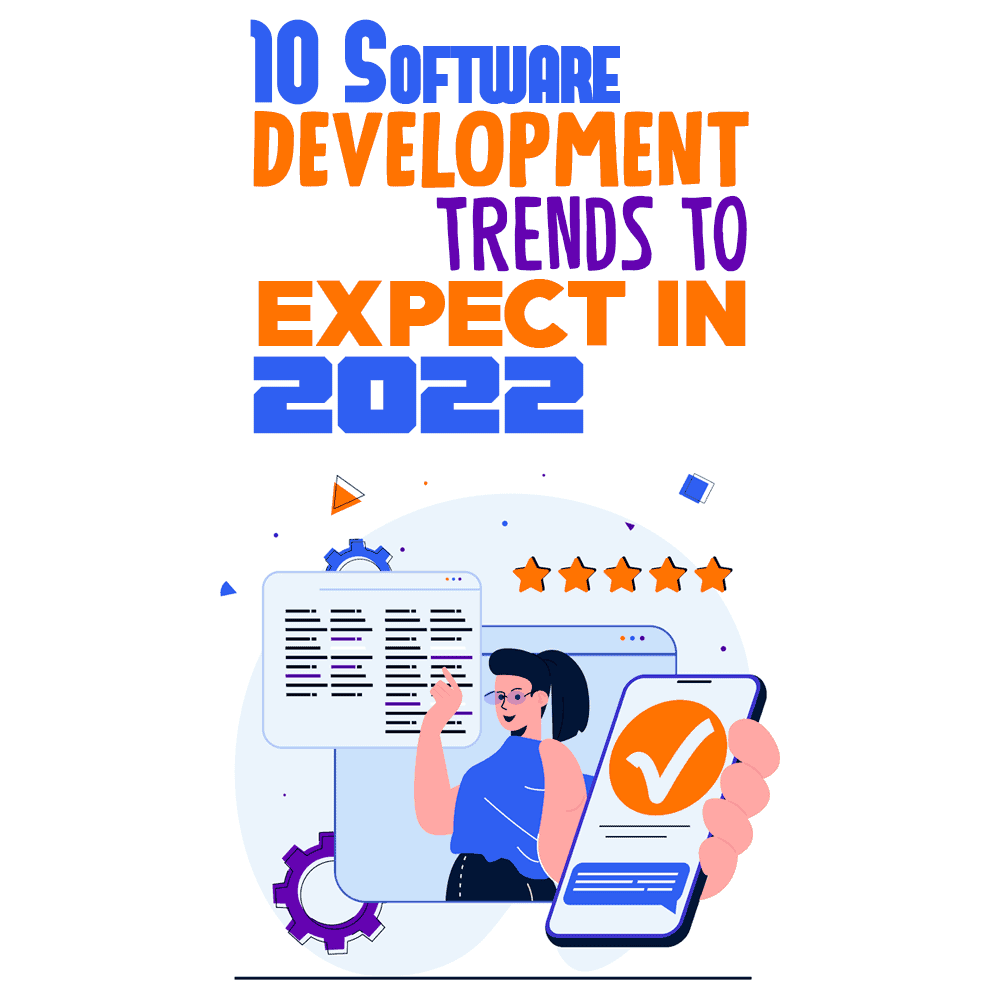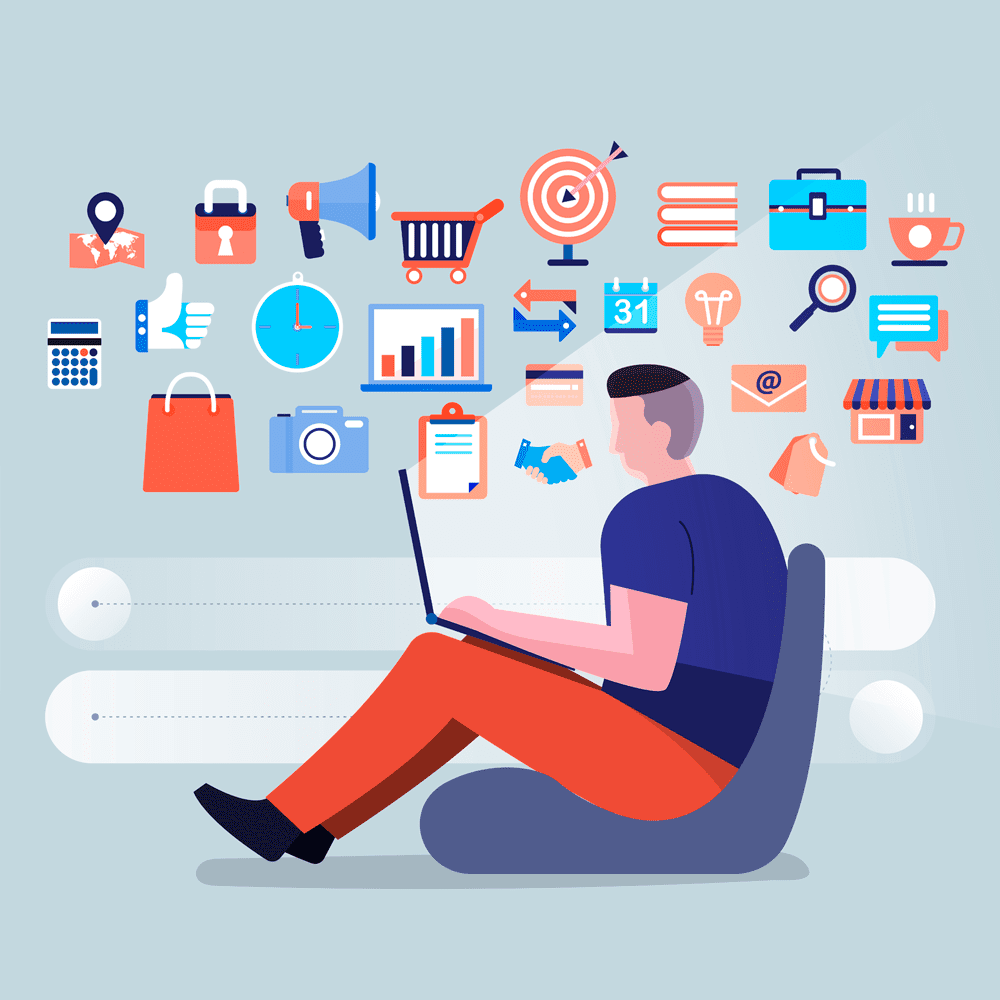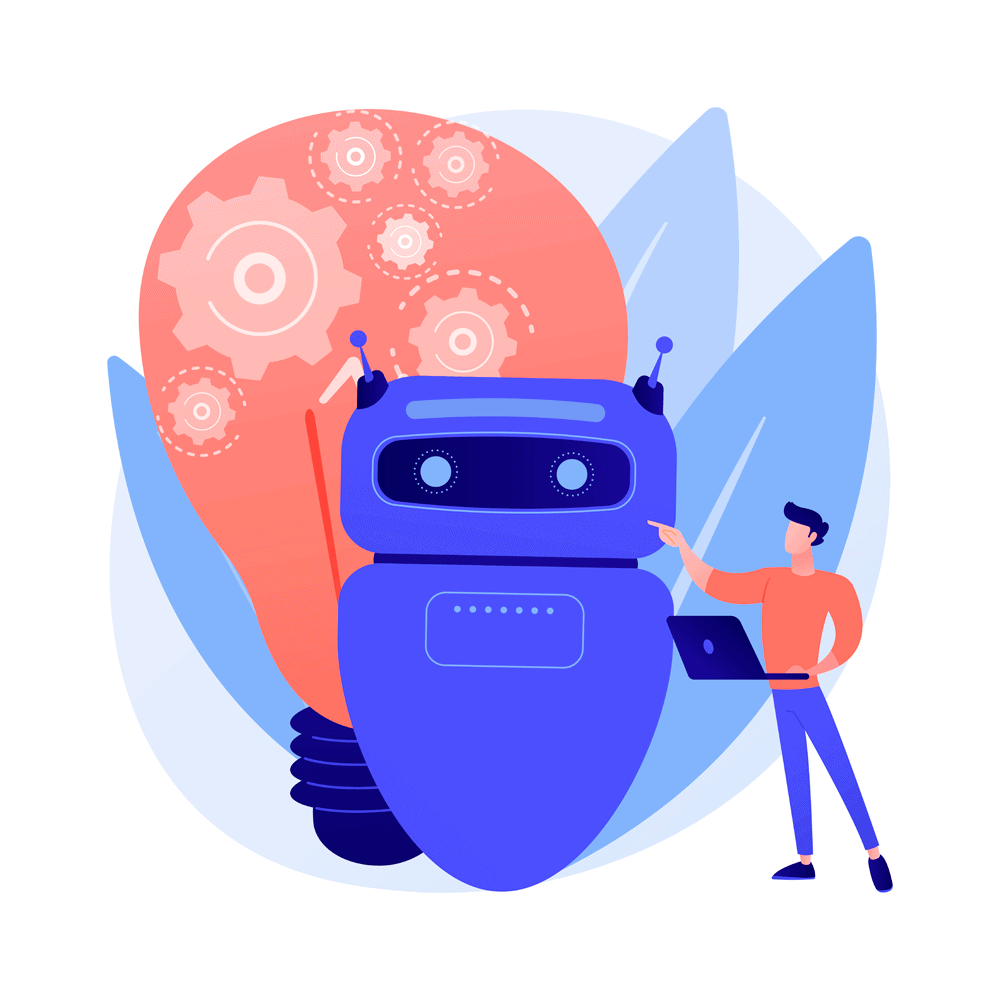 The world of software development is a constantly evolving landscape. Nothing ever stays the same, because programmers are always innovating.
The world of software development is a constantly evolving landscape. Nothing ever stays the same, because programmers are always innovating.
Whether it’s automation, stronger security, augmentations, cross-platform compatibility, or a plethora of other goals, it seems like apex coders never call it a day. Their undying effort to create the perfect product pushes society forward and inspires the next generation of programmers.
Let’s take a look at 10 of the top software development trends that we’re likely to see more of this 2022!
#1: Increased Cybersecurity
Every software developer knows (or should know) that an important factor for every application or website is security. Given its importance, there will definitely be an increase in cybersecurity—especially after the surge in cybercrimes we saw throughout the pandemic.
Cybersecurity is a high priority for governments and other organizations, as they simply can’t afford any data breaches. The estimated global cost for cybercrimes is $6 trillion annually, leaving the door open for cybersecurity ventures.
Almost 2,200 people suffer from cyberattacks every single day—which brings the annual total to more than 800,000 people worldwide. More websites and applications will start to require two-factor authentication, frequent software updates, stronger passwords, and other proactive measures.
The added steps are simple, and as users we need to go through them to keep our accounts or networks secure. Developers are tirelessly working on protecting any sensitive data so that consumers can continue to feel safe while transacting online.
#2: Voice Control
Siri, Alexa, Google, and other interactive virtual assistants (IVAs) are just a few examples of the advances in voice-control technology. Voice control has turned into a trend because it has quickly become a great help to humans who are dealing with mundane, everyday tasks.
For example, you could be getting ready to go but need to call your friend while your hands are full. All you’d need to do is summon Siri by saying, “Hey Siri!” and ask her to conveniently dial your friend’s number for you.
It should also be noted that voice control could make a big difference when it comes to accessibility. Those who are visually impaired or physically handicapped can now interact with tech in a much easier way than ever before.
Bear in mind, voice control can work with desktop computers, laptops, and even smart TVs. Smartphones and smart-home devices are just the first mediums that IVAs found widespread adoption in.
With technology developing every passing day, who knows what can be commanded. It’s not hard to envision a future where virtual assistants control the room temperature, lights, and alarm systems for many houses on the planet.
Even today, we already see power companies using automated systems to adjust thermostats in homes, with the aim of being more eco-friendly. This is only the start for smart home technology and the wider applications of voice control.
#3: Low-Code/No-Code Use
Not everyone can read and speak code like some kind of robo-linguist. Jumping from Java to Python or to C++ can be extremely jarring, especially for coders who are new to the industry.
However, platforms that make use of visualization software and drag-and-drop editors make it possible for everyone to become their own developer.
It’s important to note that the uses for visual software aren’t limited to creating simple apps. In fact, many large websites have been created with no-code solutions and a drag-and-drop editor. No-code/low-code solutions make development a lot more accessible.
Instead of having to learn multiple programming languages or hire an entire development team, startups can create a minimum viable product on their own with such solutions. That said, there’ll always come a point where you need experienced developers on board.
There are myriad factors that could prompt companies to take the leap toward an in-house development team. A few examples would be adding custom integrations, implementing complex features, or developing an app for a new platform (from desktop to mobile and vice versa).
#4: Internet of Behavior (IoB)

With such widespread use, it’s inevitable that bad actors will abuse the sheer accessibility that the internet has brought to society. Even if you set hackers aside, there’s no question that large tech companies are getting hungrier and hungrier for user data.
By 2023, Gartner estimates that 40% of the world’s population might have their individual activities digitally tracked. This data could also be used for targeted marketing campaigns that will undoubtedly have an impact on our behavior online.
In fact, you already see industry-leading software companies like Userpilot putting a great emphasis on behavioral segmentation. They’re not the first and surely won’t be the last, so getting a good grasp of IoB is absolutely worthwhile.
One approach would be to use behavioral patterns of your most satisfied customers as a guide for which features to promote to the rest of your user base. Of course, supplementing this with insights from feature surveys would work best.
#5: Widespread Adoption of Artificial Intelligence
If you’re up to date on pop culture, you’ll likely be familiar with the meme of robots taking over planet Earth. However, it’s starting to sound more like fact than fiction as time goes on. There’s no question that AI can improve management of projects and overcome unique obstacles.
One of the first and most famous AI-equipped robots was built by the company Hanson Robotics. They built a female robot named Sophia Hanson, who stunned the world with her advanced programming for the time.
She was eventually named the United Nations Development Programme’s first Innovation champion. Countless companies are now adopting AI as a means of streamlining human workflows.
Whether you’re in engineering, education, medicine, business, or various other industries, you’ve likely already come into contact with AI workflows—whether you know it or not. These can range from simple things like automating a task on a Trello board to more advanced uses.
Many telephony platforms and call center solutions already use artificial intelligence to identify data trends and optimize the flow of their day-to-day operations. AI shines in taking care of the repetitive, time-consuming tasks that distract humans from creative processes that can’t be outsourced to a machine.
#6: Growth of the Metaverse
There’s no question that the metaverse is growing.
If the concepts in “Ready Player One” used to seem like fantasy, companies like Meta/Facebook, Unity, Roblox, and various others are building a virtual world for people to work, play, and almost live in.
In 2020, the metaverse’s market value was estimated at $22 billion and is predicted to increase by 41.7% in the next few years. It might even reach up to $800 billion in market value over the coming decades.
People are expecting a bigger metaverse, and they are ready and excited for it, although people are also expecting it would change and replace the “real life” and terminate all actual human contact, which happens to just be over-exaggerating the metaverse.
There are already numerous ways to invest in augmented and virtual reality, and large platforms are already investing in the metaverse. An example would be Facebook’s Meta, which lets its users learn and collaborate in 3D spaces that can go beyond what they imagine.
As the metaverse is growing, payment with cryptocurrencies is becoming a normal thing too, and things like the bitcoin calculator have become an essential tool for internet purchases.
More platforms are looking to extend the use of the metaverse, especially in the gaming world, as gamers are looking forward to the experience.
#7: Nearshore Software Development
The main difference between nearshore outsourcing and full outsourcing is the proximity to your headquarters. A good example would be a U.S. company outsourcing their workload to Mexico or Canada rather than Asia or South America.
There are quite a few pros to nearshore software development that have made it popular as of late. First of all, you’ll have the entire team working in a similar time zone, which can make it easier to coordinate schedules.
Second, you’ll also get access to a larger (and likely more affordable) talent pool, which can help you hire the right people without breaking the bank. As these developers live outside the U.S., their cost of living is a lot lower, which often means they’re satisfied with lower rates.
That said, there are a few drawbacks to consider, like language barriers and the smaller talent pool compared to offshore outsourcing. Overall, it’s a good option for startups that need help with processes like development, sales, and customer support.
#8: Progressive Web Apps (PWAs)
There are several progressive web applications that have become quite popular—often delivered through the web using common programming languages like JavaScript, HTML, and CSS.
Some successful PWAs are Todoist, Simplenote, PhotoStack, and Flipboard, with their rapid user growth being a direct result of their unique implementation approach. In the future, progressive web apps might even replace the native applications that we currently use.
After all, why would you take the time to install and setup a program if you could run it just as well through the web. In fact, we’re already seeing this with many tools like Discord and Asana, where users just use the app through their browser.
The development of PWAs creates a faster, engaging, and more reliable experience for users.
#9: Cross-Platform Development
Android and IOS are in completely different worlds. These different operating systems limit the connection and the compatibility between apps. However, with the advent of cross-platform compatibility, it’s becoming increasingly possible to handle all your tasks regardless of what OS you’re using.
Not only is cross-platform useful in mobile operating systems, but it can also benefit those who use team collaboration software or like to game in their free time. We’re finally nearing a point where you can play with your friends on mobile through your desktop gaming rig.
Cross-platform is additionally beneficial to developers, since it leads to easier implementation. Essentially, they’ll be able to work with reusable code, which saves a lot of time and effort on their end.
#10: Human Augmentation

Human augmentation development is the next step in extending human capabilities, just as the combustion engine and internet were. While it’s often perceived as futuristic tech, creating cognitive and physical augmentations is something that scientists are actively working on.
The year 2022 is a look forward to human augmentation and even prosthesis. With the ever-growing technology, it’s possible for the blind to see and the deaf to hear again. Human augmentation development can bring forth a new level of healing for all of humanity.
The Future Is Now
As you can see, the cutting edge of software development shows no signs of slowing down when it comes to innovation. Programmers will continue to optimize every aspect of their workflow and code until they achieve peak results; that’s just who they are.
Whether you’re redirecting your development efforts toward web apps, hiring nearshore programmers, or leveraging the power of artificial intelligence to get ahead of your competitors, it’s certainly an exciting time to be in the industry.
If you enjoyed this article, then be sure to share it with one of your friends who either has a passion for software development or is thinking about learning how to code. You never know when the latest trends might inspire the coders of the future!
